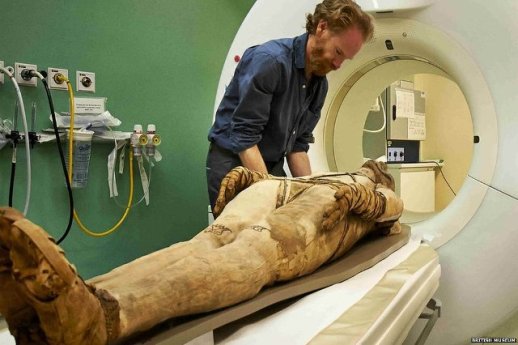Από το 4.500 π.Χ. λένε τώρα οι Βρετανοί αρχαιολόγοι ότι οι Αιγύπτιοι άρχισαν να φτιάχνουν μούμιες
Το αρχαιότερο εύρημα ταρίχευσης ανθρώπου είναι μια Αιγυπτιακή μούμια που χρονολογείται 2,2 χιλ. έτη π.Χ., γράφει η ελληνική εφημερίδα «ΒΗΜΑ».
Τα αποτελέσματα μιας 11ετούς μελέτης από ειδικούς μεγάλων βρετανικών Πανεπιστημίων (Οξφόρδης, Γιορκ κ.α) δείχνουν ότι η τέχνη της ταρίχευσης είναι πολύ παλαιότερη αφού σύμφωνα με τη μελέτη οι Αιγύπτιοι γνώριζαν να φτιάχνουν μούμιες από το 3,700 π.Χ ενώ υπάρχουν ενδείξεις ότι μπορεί να γίνονταν ταριχεύσεις το 4,500 π.Χ.
Η ανακάλυψη είναι σημαντική αφού δείχνει ότι ο ανθρώπινος πολιτισμός είχε προοδεύσει πολύ νωρίτερα από όσο πιστεύαμε σε επίπεδο συμβολισμών όπως αυτή που σχετίζεται με το πέρασμα στην άλλη ζωή και τη συντήρηση των νεκρών σωμάτων καθώς και της ανάπτυξης της απαραίτητης τεχνολογίας για αυτό τον σκοπό. Η μελέτη δημοσιεύεται στην επιθεώρηση «PLoS ONE».
ΔΗΜΟΣΙΕΥΜΑ ΚΑΙ ΣΤΗΝ ΑΓΓΛΙΚΗ ΕΚΔΟΣΗ ΤΗΣ «ΑΛ ΑΧΡΑΜ»
The earliest evidence of mummification in Egypt suggests that the practice of wrapping bodies to preserve them after death began around 1,000 years earlier than thought, said a study Wednesday.
The study in the journal PLOS ONE is the first to describe resins and linens used as funeral wrappings dating back as far as 3350 to 4500 BC.
Historians have long believed that the Egyptian practice of mummification began around 2500 BC.
But by applying modern scientific analysis to Egyptian collections that were already in British museums, they found that back then, people were using similar preserving materials in the same proportions as found in later mummies.
«This work demonstrates the huge potential of material in museum collections to allow researchers to unearth new information about the archaeological past,» said co-author Thomas Higham of the University of Oxford.
«Using modern scientific tools our work has helped to illuminate a key aspect of the early history of ancient Egypt.»
Experts used gas chromatography, mass spectrometry and other chemical analysis techniques to identify natural materials used to preserve corpses at the time.
«These recipes consist of a plant oil or animal fat “base” constituting the bulk of the “balms”,» said the study.
Lesser amounts of conifer resin, an aromatic plant extract, wax and plant gum or sugar were also used.
«Moreover, these recipes contained antibacterial agents, used in the same proportions as were employed by the Egyptian embalmers when their skill was at its peak, some 2500-3000 years later,» said the study.
Researchers on the decade-long project came from the Universities of York, Macquarie and Oxford.
The linen fragments they examined originated from entombed bodies in the earliest recorded ancient Egyptian cemeteries at Mostagedda in the Badari region of Upper Egypt.



